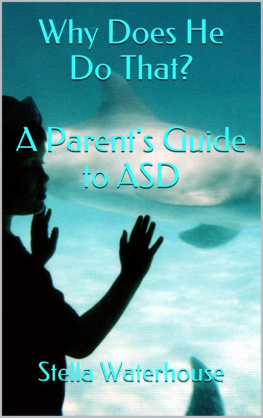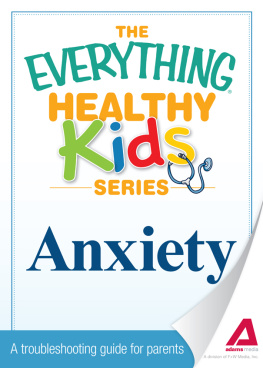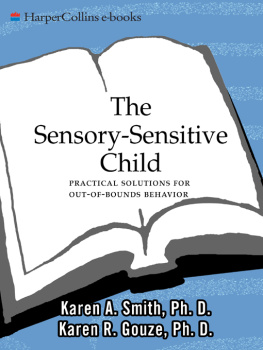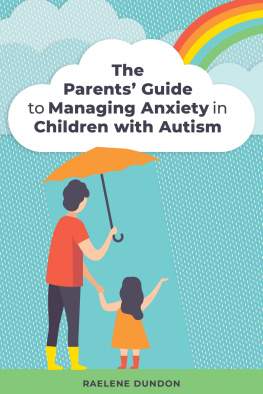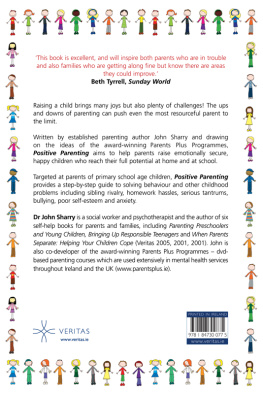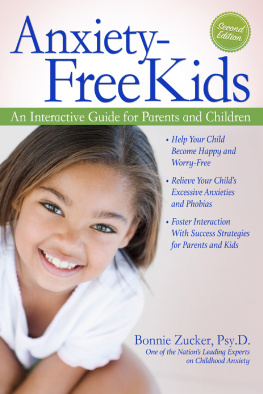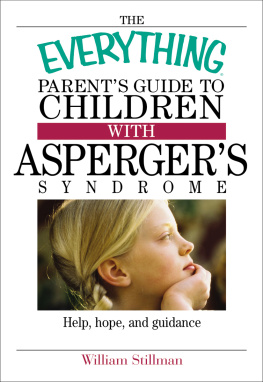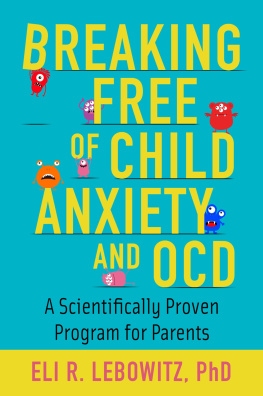WHY DOES HE DOTHAT?
A Parent's Guide to theAutistic Spectrum
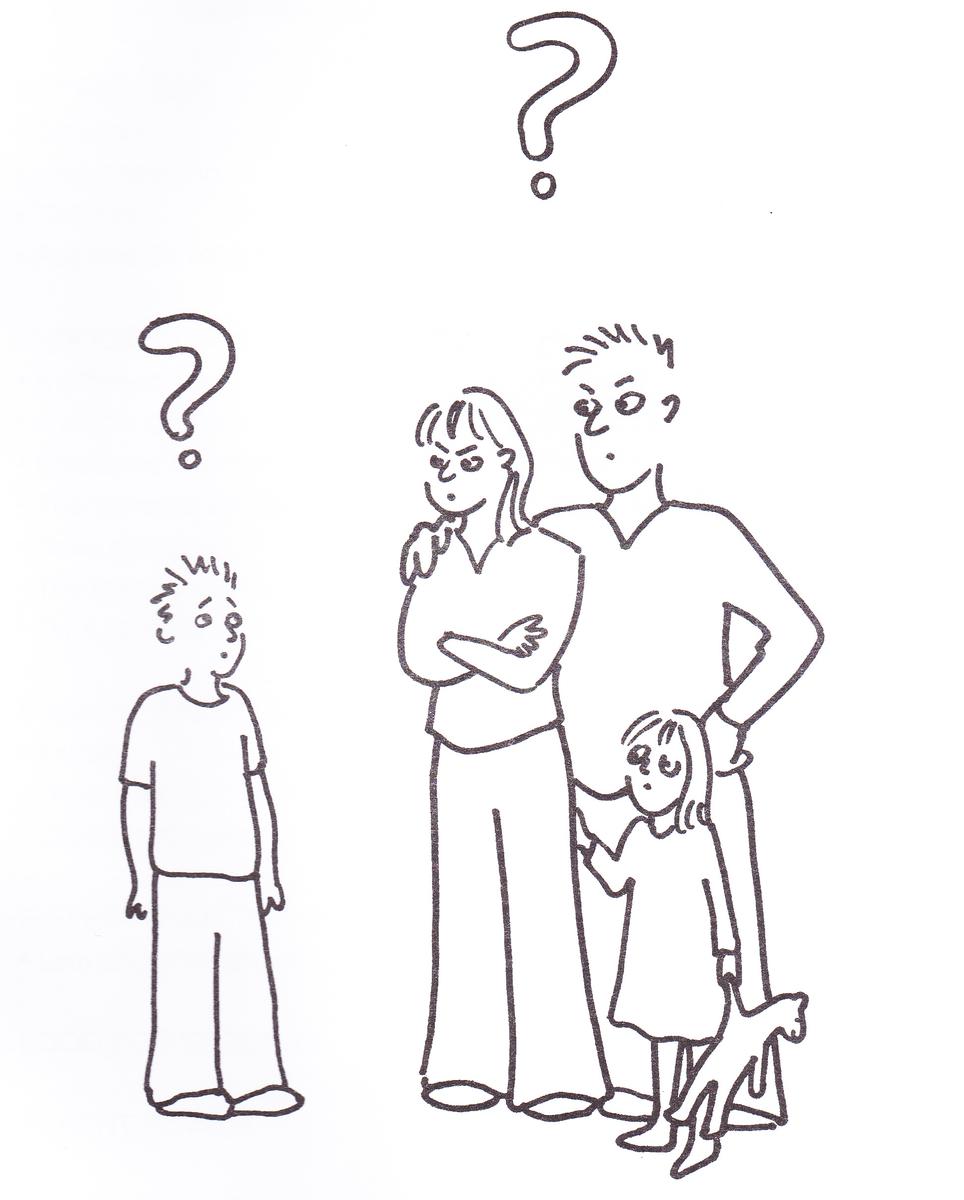
Illustrations by KateVargues
Copyright Stella Waterhouse2013
Published atSmashwords
This ebook is licensed foryour personal enjoyment only. This ebook may not be re-sold orgiven away to other people. If you would like to share this bookwith another person, please purchase an additional copy for eachrecipient.
Thank you for respecting the hard work of thisauthor.
For permission requests, please write to the author,addressed Attention: Permissions at
***
CONTENTS
INTRODUCTION
CHAPTER 1 A PARENTSGUIDE
Criteria
The AutisticSpectrum
Understanding
From Child ToAdolescent
CHAPTER 2 FOOD FORTHOUGHT
Dietary/digestiveproblems
Bowel disorders
Genetic and/or metabolicproblems
CHAPTER 3 GROWINGUP
Neuro-developmental delay(NDD)
PhysicalDevelopment
Understanding
Emotions
ExposureAnxiety
Thought
The Effects Of VisualThinking In ASD
CHAPTER 4 THROUGH THELOOKING GLASS...
A VisibleDifference.
The Princess and thePea
Nose Pollution
The Torment ofSound
Try It Yourself
CHAPTER 5 PRIMARYEFFECTS
Anxiety
Other Effects
Mono processing
Informationoverload
CHAPTER 6 E-FFECTS NOTDE-FECTS
LearningDifferences
Challenging Behaviors
Vulnerability
Signs OfBullying
Cyberbullying
CHAPTER 7 PARENTPOWER
RESOURCES &BOOKS
***
INTRODUCTION
People with AutisticSpectrum Disorders (ASD) often feel they inhabit another planet,which is why some refer to themselves as aliens. Certainly, judgingby their reactions, they find this world both impenetrable andfrightening.
Such feelings are oftenthought to result from the difficulties they have in relating tothose around them, and their inability - regardless of intellect -to empathize with or communicate their emotions to others, in theway that most people do.
That idea is constantlyreinforced by the criteria used in diagnosis which focus mainlyupon the difficulties with social relationships and communicationbut those are merely the tip of the iceberg.
Since autism and Aspergerssyndrome were identified in the 1940s many articles and books havebeen written by or featured people who have autism or Aspergerssyndrome. Such accounts have come, over several decades, frompeople of various ages and abilities living in different parts ofthe globe and yet despite this they remain remarkably consistent.Most noticeable is the fact that time and time again one reads orhears the words fear, terror or confusion as well as accounts ofabnormal sensory experiences. These comments are supported by thosepeople with ASD who are able to talk about theirexperiences.
The accounts of abnormalsensory experiences have been given further credence over the yearsby Dr Bernard Rimland and Dr Carl Delacato and since then, by thewell researched and documented work of those who studyneuro-developmental delay. Indeed similar (but less severe)abnormal sensory perceptions exist amongst many other groups ofpeople: from those with physical problems like migraine to thosewith learning disabilities such as dyslexia, dyspraxia or attentionproblems.
This book gives a briefoverview of the various problems experienced by children on a dailybasis. Information on the better known aspects of these conditionshas been kept relatively brief so that more space can be given tothose lesser known but vitally important aspects: those of thesensory problems and anxiety for, as you will see, many of thechilds apparently odd mannerisms or bizarre behaviors can beexplained by their relationship to such things.
Who am I? I first becameintrigued with autism in the late 1960s when I met three verydifferent children, all of whom had the same diagnosis. Themystique of those children has shaped my life and eventually led meto work in a residential community specifically for people withASD; where I went on to become DeputyPrincipal.
I wrote my first book on ASD in 1990, following itwith A Positive Approach toAutism in 2000 and am nowcompleting my forthcoming four part series The Autism Code. T hus the informationin this book is not 'mainstream' being based on my work with peoplewith ASD and my 30+ years of research; much of which has involvedlistening to people with ASD and reading their accounts.
The next book in this series - A Survival Guide Positive Parenting for Children with ASD aims to make your child's life - and yours - easier, bysuggesting a number of relatively simple and effective ideas thatyou can use at home.
N.B. While the text refersmainly to the child or children, ASD is found in people of allages.
***
CHAPTER 1
A PARENTSGUIDE.
Criteria
The fifth edition of theDiagnostic and Statistical Manual of Mental Disorders (DSM-5)published by the American Psychiatric Association modified thecriteria for ASD by excluding the previous diagnoses of AspergerSyndrome, Pervasive Developmental Disorder Not Otherwise Specifiedand Disintegrative Disorder.
While the diagnosis nowgiven is simply termed Autistic Spectrum Disorder many of thoseformerly diagnosed with Asperger's syndrome obviously continue tothink of themselves in that way. However it is also worth notingthat in 2013 a study using brain scans identified some realdifferences between the two.
Although the symptoms beginin early childhood, if the problems are mild they may not berecognized fully until the child begins school or even later. Thusthe new criteria are based on functional impairment, currently orhistorically, in two main areas:
1) Socialcommunication/interaction. The DMS gives examples which include:
* Problems reciprocatingsocial or emotional interaction, including difficulty establishingor maintaining back-and-forth conversations and interactions,inability to initiate an interaction, and problems with sharedattention or sharing of emotions and interests withothers.
* Severe problemsmaintaining relationships ranges from lack of interest in otherpeople to difficulties in pretend play and engaging inage-appropriate social activities, and problems adjusting todifferent social expectations.
* Non-verbal communicationproblems such as abnormal eye contact, posture, facial expressions,tone of voice and gestures, and an inability to understandthese.
2) Restricted andrepetitive behaviors (atleast two of which need to be present). These include:
* Stereotyped or repetitivespeech, motor movements or use of objects.
* Excessive adherence toroutines, ritualized patterns of verbal or non-verbal behavior,or
excessive resistance tochange.
* Highly restrictedinterests that are abnormal in intensity or focus.
* Hyper/hypo reactivity tosensory input or unusual interest in sensory aspects ofthe
environment (e.g.,apparent indifference to pain/temperature, adverse response tospecific
sounds or textures,excessive smelling or touching of objects, visual fascination withlights or
movement).
Prior to the change in the criteria it was considered that those withAsperger's syndrome shared the problems of social interaction andhad repetitive behaviors or obsessive traits. However they were thought to differ fromchildren with autism because they had no significant delay in thedevelopment of language or in their cognitive and self-help skillsor in their curiosity about the environment.
Aspergers syndrome wasalso generally linked to people of average (or above average)intelligence, many of whom cope relatively well with daily life.Even so it is important to note that some children with autism havesimilar abilities too.
Next page
